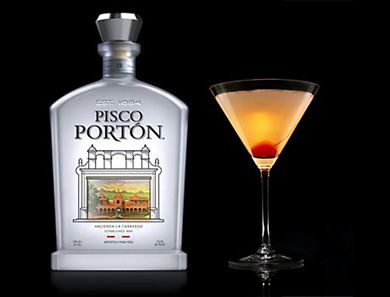
Post-1900, there were three things every visitor to SF had to do: “… ride the cable cars, watch the sun set through the Golden Gate, and try Duncan Nicol’s pisco punch.” Or so writes SF author Gregory Dicum in The Pisco Book, which includes a 1940s photo of House of Pisco, a former bar on Pacific Street, with a huge crowd milling around under a sign reading “Original World Famous Pisco Punch.”
As trends go, pisco—the famous grape-based Peruvian spirit—clearly isn’t new to SF. Today we may have the Pisco Latin Lounge and La Mar, as well as Campo de Encanto (a pisco made by SF sommelier Walter Moore, Cantina bar owner Duggan McDonnell, and Peruvian distiller Carlos Romero), but the city has been importing pisco since the 1800s. Destination bars like Bank Exchange, which was located where the Transamerica Pyramid is now, served pisco in everything from milk punch to bartender Duncan Nicol’s pisco punch. Though there are Peruvian punch recipes dating back to 1791, Nicol’s version—which includes brandy, gum syrup, pineapple syrup, and pineapple—became the gold standard.


The Bank Exchange Saloon in 1910, Duncan Nicol in the foreground.
Now, the pisco pendulum has swung back again. At Pisco Latin Lounge, you can try a flight of Viñas de Oro piscos, each made with a different grape. Viñas de Oro has a sweeping, Burning Man-esque warehouse on Treasure Island that holds pisco tastings and other events (stay tuned on their Facebook page).
While a spirit like cognac is also made from grapes, it’s aged in barrels, which affects its taste. Pisco, on the other hand, never touches wood, which means that you can really taste the grapes. Just as with wine, the grape varietals’ unique properties are clearly apparent—some are fruity and floral, others dry and nutty. People even speak of pisco having a sense of terroir. Fans of nuanced eau de vie, gin, or grappa will likewise appreciate pisco’s delicate subtleties, while vodka drinkers find it a gentle next step.
On a national scale, Pisco Portón was released in April in the U.S., launching first in SF. Though brands like BarSol and Macchu Pisco have been popular for years, heavily funded Pisco Portón is being hailed for raising the spirit’s visibility level, and some say quality, to new heights. Want further proof that pisco has gone mainstream? Trader Joe’s recently released its own brand. Enough said.
Lucuma Sour
From bartender Zane Tessay at Pisco Latin Lounge. Lucuma, a fruit, can be found in Latin grocery stores such as Evergreen Market (2539 Mission St. at 21st, 415-641-4506). Try topping it with popped amaranth grain, found at Rainbow Grocery (1745 Folsom St. at 14th, 415-863-0620, rainbow .coop).
2 ounces pisco
4 teaspoons lucuma puree
1 ounce simple syrup
½ ounce lime juice
¼ ounce walnut liquor
Touch of egg white
A few ice cubes
Add all of the ingredients to a shaker. Shake vigorously until frothy and blended. Strain and serve in a chilled lowball glass.
Related Articles

